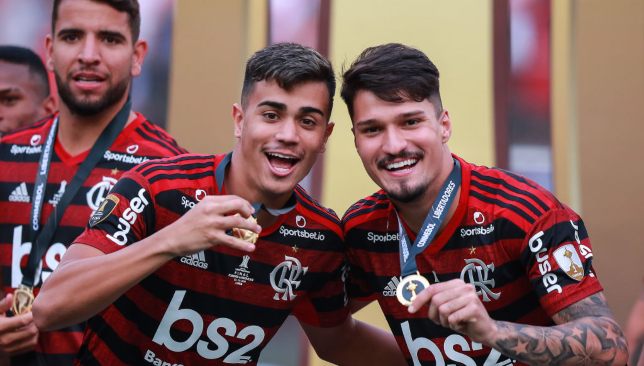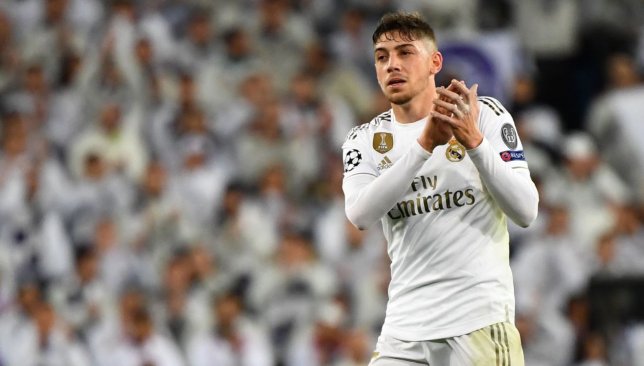
Things are looking up for Real Madrid at the moment.
After a slow start to the season, Zinedine Zidane’s side now sit joint top in La Liga and are looking strong ahead of their Champions League last-16 tie with Manchester City.
To add to that, their squad is developing strongly. Defensively, they’ve improved drastically while up top, the return of Eden Hazard is inching ever closer to bolster the armoury.
Interestingly, it’s not just on the pitch where things are working out well for them. Following a disastrous 2018/19 campaign where the season was essentially over by March, Real have responded well by making some shrewd signings with a smart outlook towards the future.
Club president Florentino Perez is showing hints of his Galacticos policy once again, except this time, it’s aimed at younger talents.
A key criticism of Los Blancos last season was that they failed to adequately replace Cristiano Ronaldo, but now, Perez is looking beyond just one position: he is building a dynasty that can easily transition to the next era.
The key spine of their Champions League three-peat winners are aging. Ronaldo has left, Toni Kroos is 30, Marcelo is 31, Karim Benzema is 32, Sergio Ramos is 33 and Luka Modric is 34.
This week, it was reported talks had intensified between Real and Flamengo for the highly-rated 17-year-old Reinier Jesus and an announcement for his signing is imminent.
He is set to join a youthful core of Brazilians already at the club. Eder Militao, Vinicius Junior and Rodrygo Goes have all featured this season and performed relatively well. They represent the present and future of the club.
The average age of the four is just 18.75 and they were signed for a combined fee of €170 million (including Jesus’ reported €30 millon fee). Perez, having been burned in losing out on Neymar to rivals Barcelona, is now obviously unrepentant in ensuring he doesn’t miss out on the next Samba superstar.
It’s a relatively low-risk and high-reward strategy as well, these players have been hyped up virtually since they started kicking a ball and so even if these money-spinning moves fail, it’s likely they’ll still retain a high value given few players bought from Real Madrid are done so cheaply.
Barring a long-term injury, players like them are always in demand from top European clubs and their resale value will still hold.
But Brazil is not the only talent pool for the club. The remit is clear – sign the world’s best young players.
Martin Odegaard has been at Real Madrid since 2015 and is now emerging as a fine talent. At 21, he is finding his feet in Spain at Real Sociedad and recently won the Norwegian Player of the Year award ahead of red-hot forward Erling Braut Haaland.
Also among their ranks is Luka Jovic. Granted, the Serbian hasn’t quite made the immediate impact many had expected after his €60 million move from Eintracht Frankfurt last summer, but he’s still only 22 and is playing second-fiddle to Benzema, who is arguably in the best form of his Real Madrid career. A bit of time away like Odegaard could do him a world of good.
Along with Odegaard, there are also two others in Spain, although they’ve enjoyed contrasting fortunes: Takefusa Kubo and Andriy Lunin. Kubo (18), signed for Madrid last summer and instantly moved to newly-promoted Real Mallorca on loan. He has enjoyed a stellar spell, making 16 appearances this season and establishing himself as one of the best dribblers in Spain. Lunin (20), is at Real Valladolid but has yet to play.
There have been reports that Los Blancos are looking to end Lunin’s loan spell and send him down a division, where Real Oviedo are reportedly interested, but the interest in his potential still remains high. The chances for a goalkeeper are much slimmer, given there’s only one who can play each game, and so it’s less about his talent and more to do with experience being preferred to youth in a key position.
The average age of all signings Real Madrid made last summer was 22, in 2018/19 it was 22.12 and in 2017/18 that it was 19.5. It’s clear Perez is focusing on slowly integrating long-term plans and that has shown in the first team as well – Federico Valverde has emerged as an outstanding talent this season and having been at the club since 2016 (at the age of 17), he is finally making his mark as the heir to Modric.

If there is one thing Real have been clever with it’s selling fringe players for a big price. Alvaro Morata is a good example: he was signed from Juventus for €30 million in 2016 and sold a year later for €66 million despite playing second fiddle to Benzema in the key matches of the 2016-17 season. The same can be said for Mateo Kovacic and Marcos Llorente, who had little game time at Real Madrid and were shipped out at a profit.
The Madrid side have used the loan market well in this respect, ensuring that players can perform at the highest level and not see their values drop. This is far better than players staying at the club and having roles on the bench. With a wealth of options in midfield for next season, it’s likely they will ship out several players on temporary deals again: the likes of Vinicius, Rodrygo and Odegaard will be under the radar.
For now, this renewed venture capitalist transfer policy has worked out well for Perez and Real Madrid. He’s investing well in the potential of his new recruits and his team, in the slightest sense, has benefited currently as well.
How the next few years turn out is up in the air, but the indications look good. However, even if plans do go awry, Perez has proven that he has the ability to fix it and turn the situation around.